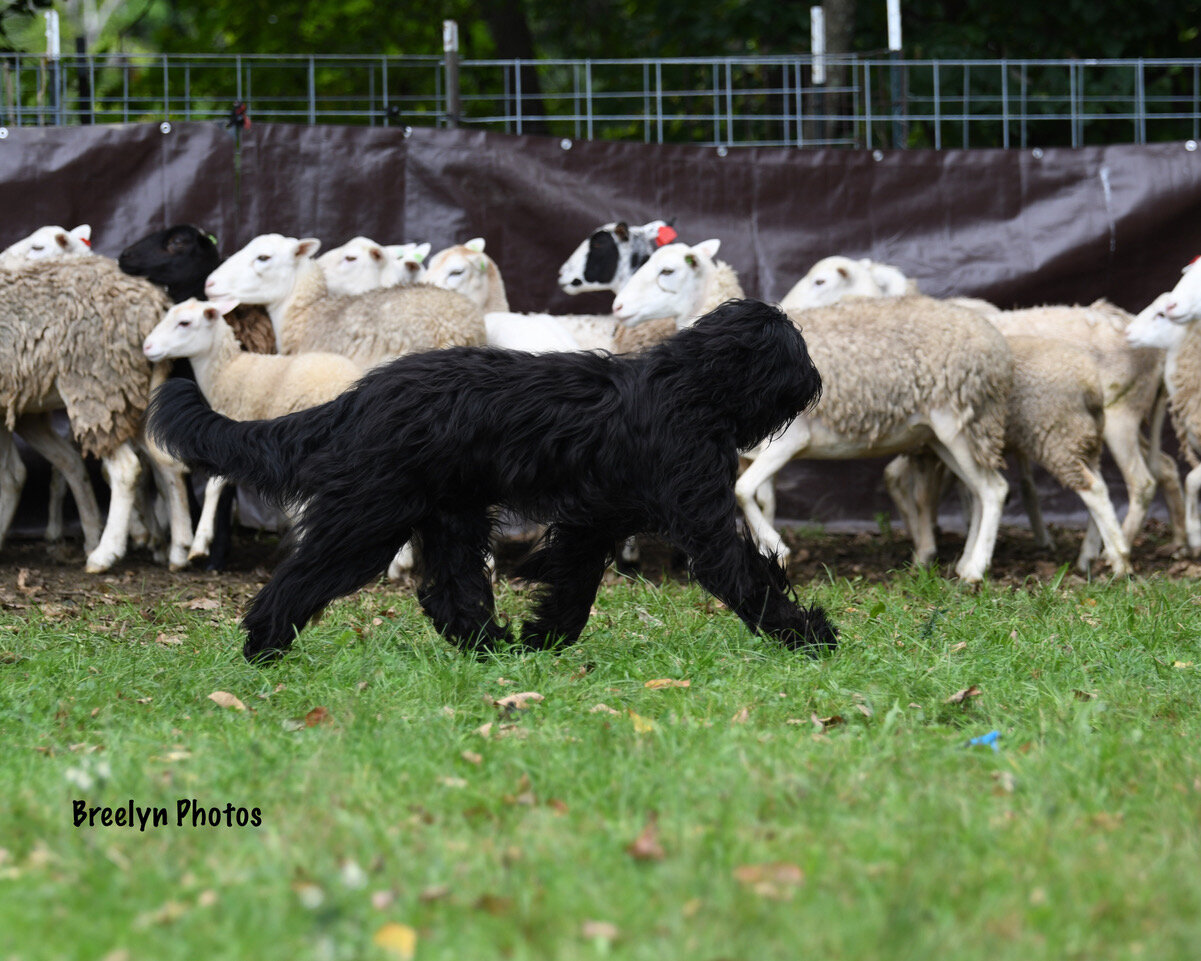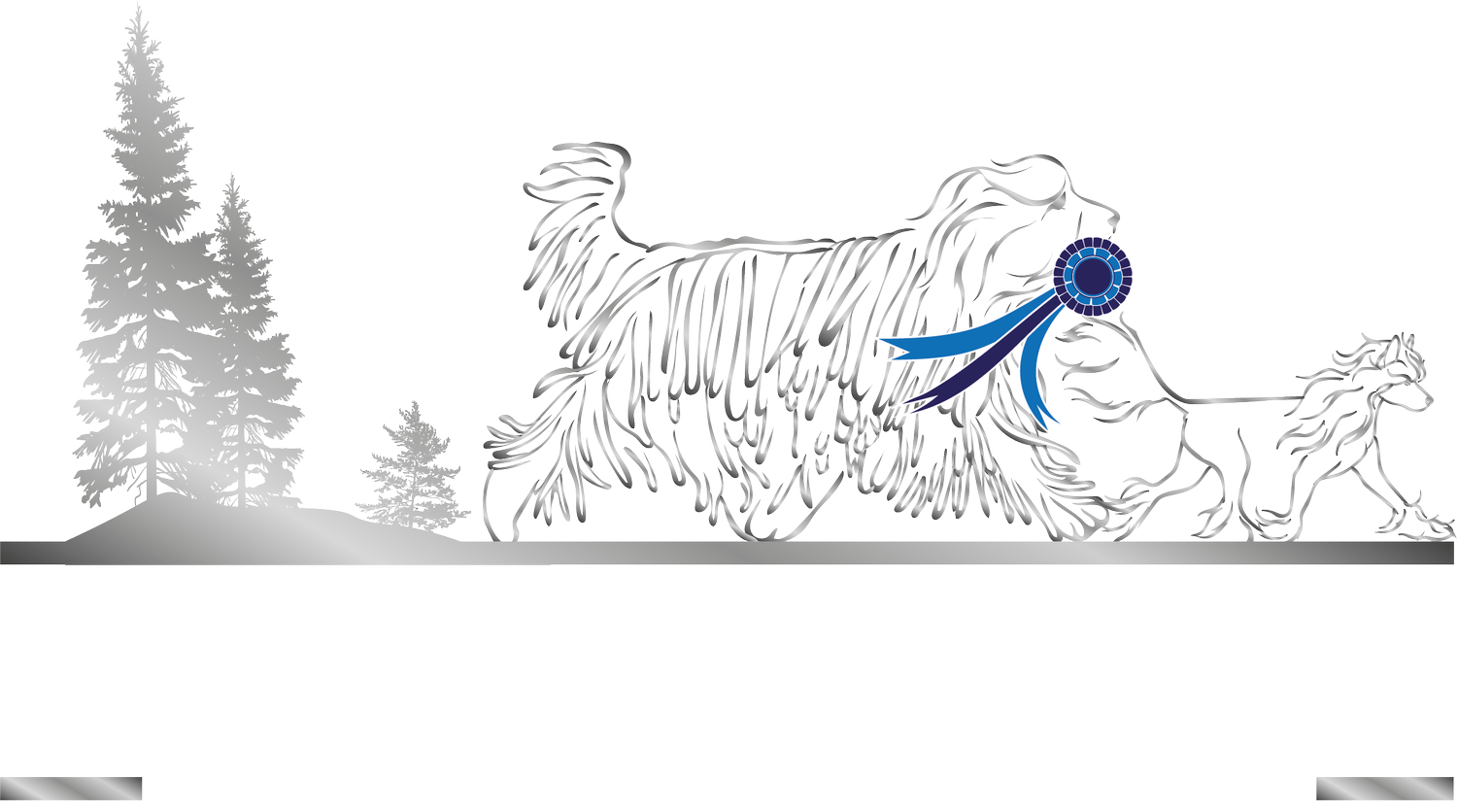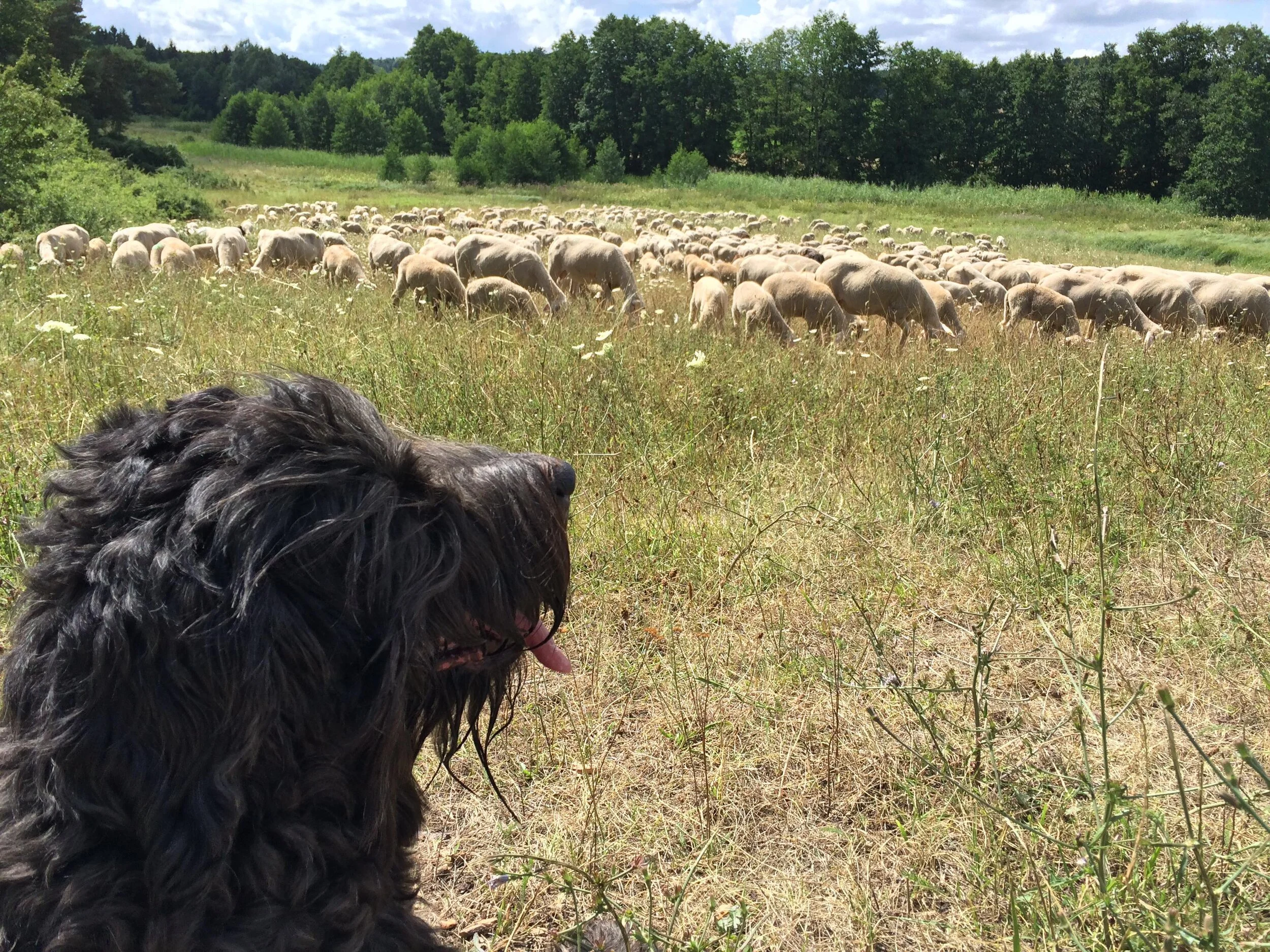The History of the Bergamasco
Italy is the country of origin of the Pastore Bergamasco

Origins Abroad and in the USA
The Bergamasco Sheepdog is a medium sized rustic breed with origins in the northern Italian and Swiss Alpine regions characterized by it’s flocked coat which looks like felts of wool. The Bergamasco Sheepdog (Cane Da Pastore Bergamasco) originated in the Alpine arch from a more broadly distributed European stock dog. According to a 2018 genetic study on Italian herding breeds there have been observed signatures of haplotype sharing between the Bergamasco Shepherd and the Briard and Bernese Mountain Dog, the Lupino del Gigante and Leonberger, and the Cane Paratore and Boxer. These patterns of haplotype sharing between breed pairs indicate that each Italian herding population diverged from the others through its individual introgression with outside breeds and that they are not merely geographically separate populations of the same breed. This means that these all shared a common ancestor, however the difference between them is that they have since mixed with other breeds. A shared signature is present at high levels in all Cane Paratore, Pastore della Lessinia e del Lagorai, and the non-Italian Standard and Miniature Xoloitzcuintle, Peruvian Inca Orchid, and Catahoula Leopard Dog. Interestingly, the shared signature is also present in approximately half of the Bergamasco, Pastore d’Oropa, and Lupino del Gigante dogs, suggesting that those breeds demonstrate less cohesion than most well-established breeds. This type of sheepdog was widespread throughout the Alps and the name “Pastore del Alphi” would have been more appropriate since the dogs were found throughout the mountainous regions of Switzerland and Italy.Science is pointing to the Bergamasco’s origins as a pure-breed as recent as a few hundred years ago.
The Bergamini herdsmen who travelled the Bergamo Valley in the Alps and Lombardy region began the stricter selection of their dogs for the ability to handle the difficult and almost inaccessible mountainous terrain, while performing the dangerous task of guiding cattle to grazing lands by working from the head to the tail of the herd. The Bergamascos kept the large herds of cattle together, guiding them through hazards and protecting them during the night from predators.
As agricultural need changed, the Bergamasco became associated with guiding flocks of sheep in the same tending style as it did with cattle. Primarily though this breed was a cattle dog and not a “sheep” dog as commonly believed.
After the second world war, the breed was nearly decimated. Thanks to a few dedicated people, some specimens were found in the mountains that were suitable to begin breeding for homogeneity. The original breed standard was drafted in 1958 based in part on Alpino Di Valle Imagna, one of the first Bergamascos to enter the Italian beauty championships. Some of the first and very important contributors to the breed were Pietro Rota (Kennel Valle Imagna 1945), Annibale Guidobono Calvachini (Kennel Valle Scrivia 1949), Carla Mariani (Kennel dei Lupercali 1954), Mario Chignoli (Kennel dell'Idro 1959), Dr. Cantini (Kennel Grigrastro 1966) and Dr. Maria Andreoli (Kennel dell'Albera 1966). Most of today's Bergamascos come from the dogs of these foundation kennels, some of which are still breeding today.
In the United States, the first Bergamascos were imported by Mr. Ernie Byfield and his wife Mrs. Contessa Diana Masieri. The Byfields lived in New York, but the Contessa was from northern Italy and had known of the Pastore Bergamasco. She suggested the breed for them and they imported their first black male, Marcopai dei Lupercali (Marco) from Carla Mariani and two years later returned for a merle female, Farnax dei Lupercali Sabrina (Sabrina). Both imports shared Alpino Valle Imagna three generations back in their pedigrees. In 1981 they bred the first litter in the U.S.A producing 6 puppies. During this time they moved to Virginia. They also participated in rare breed shows and enjoyed promoting this extremely rare breed at that time. They produced a second litter of 10 puppies from the same parents in 1984. These litters were registered with FCI but not in the United States. The first US registered litter was not until the mid 1990s out of Gae dell'Albera and Fauno dell'Albera bred by Donna DeFalcis.
In a series of letter correspondences written by the Byfields, there was a mention of an article featuring their dogs and the Bergamasco in the 1986 February issue of Dog World Magazine. With a little bit of searching, we were able to find an original copy of the article. You can view the article HERE.
Photo of first known litter in the USA bred by the Byfields from Bergamascos imported from the Lupercali kennel in Italy
Our Ussaro. Current day Bergamasco. Ussaro is a combination of Del Piervez and Lupercali lineage.
As a Herder
Herding abilities come from the dog’s original instinct to hunt. Herding behavior is nothing more than modified prey drive. There are three main different styles of herding: Driving, fetching and tending. The Bergamasco Sheepdog is primarily a tending breed. Tending dogs were developed for the type of work that was needed in European agriculture a few centuries ago. Some examples of other tending breeds are the Belgian Malinois, Belgian Sheepdogs, Belgian Tervurens, Bouvier des Flandres, Briards, German Shepherds, Beauceron, Pyrenean Shepherds and Pulik. Bergamascos are sometimes erroneously referred to as livestock guardians. While they do have protective instinct, they do not bond with livestock for the purpose of protecting them as a main focus. While working, the Bergamasco performs a combination of instinctive behaviors with human direction. Tending requires the dog to act as a living fence, guiding large flocks of sheep, goats or cattle, to grazing areas while preventing them from eating valuable crops, wandering into roads or to keep them on designated paths. Tending breeds have a natural instinct to pick up a boundary and to work their stock from that boundary. It could be a furrow, a division from crop fields to grass, a roadway, a sidewalk etc. Tending breeds will define these boundaries naturally, and without being told, understand how to prevent stock from crossing their limits. Tending dogs patrol their boundaries and allow for stock to have grazing time while expending minimal physical effort and without frightening the livestock. They usually work from the head of the flock where the Shepherd is positioned, to the rear of the flock. This is different from a driving or fetching breed of Sheepdog. Bergamascos as well as other breeds of sheepdogs can learn to work different styles of herding but usually are best at their natural style. So while the Bergamasco is not a fetching dog or a driving dog, it can be taught to do those things. The Bergamini herdsmen were the first example of Italian transhumance who travelled the Bergamo Valley in the Alps and Lombardy region. They began the stricter selection of their dogs for the ability to handle the difficult and almost inaccessible mountainous terrain, while performing the dangerous task of guiding cattle to grazing lands by working from the head to the tail of the herd. The Bergamascos kept the large herds of cattle together, guiding them through hazards and protecting them during the night from predators. As agricultural needs changed, the Bergamasco became associated with guiding flocks of sheep in the same tending style as it did with cattle. Primarily though, this breed was a cattle dog and not a “sheep” dog as commonly believed.
In the Spring, the Bergamasco Sheepdogs were shorn and would grow back enough coat before the winter to keep them warm throughout the cold months. Due to the perilous terrain in which the Bergamasco had to work, there is no way a Bergamasco in a long and heavily flocked coat could have worked efficiently or even at all. The Shepherds had too much respect for their prized dogs to allow them to be burdened by a heavy coat during long days of traversing mountainous terrain and tending the grazing areas. This would sacrifice performance and keep them unsanitary. There are still some Bergamascos that work in their native land. Dolce, a talented black bitch in Switzerland is one of them. Dolce’s owner Rahel Koller said “I started herding sheep because Dolce needed to keep busy and she showed a good instinct for the sheep. We trained the first 5 to 6 years with upwards of10 sheep, like the Border Collies and the same exercises and rarely with 30 sheep. Then I was in Germany with a wandering shepherd and Dolce for the first time had 1000 sheep in front of her. There I could recognize her instincts for the first time (boundary work). She was 4 years old then. After that there were always between 10 and 60 sheep. We are now working with large flocks of several hundred sheep. Dolce is an all-rounder But in the meantime I prefer the boundary work.”
Here in the United States, there is little need for tending but many choose to develop and use the natural abilities of their dogs for preservation, personal farms and for herding trials. AKC has a C course designed for tending breeds which mimics the way they would have worked in agricultural Europe.
Dolce. Photo Rahel Koler
Dolce tending sheep along the road
Dolce tending sheep in the Alps
Our dogs today can trace back to some or all of these early kennels in Italy. It is imperative to continue to breed the Bergamasco in a way that will preserve the breed in its true form for many decades to come, and not in the preferable style of dog by individuals. In a small gene pool such as ours, preservation and utilization of the various lines of healthy dogs of good type is key.
I want to extend a huge thank you to those who have helped me piece some of this history together. Lenore Sarasan has been instrumental in her help with piecing together the origins of the Bergamasco breed in this country. She was lucky enough to have a puppy from each of the two original litters bred here so long ago (Sasha and Wimsey). Many thanks also to William Harris of Adelaide, South Australia, Bergamasco Wikipedia page contributor and expert on the natural history of dogs and the evolution of the wolf.











